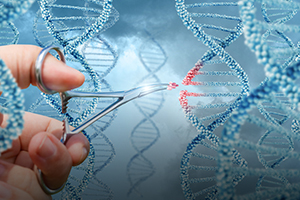More Precise DNA Editing

A new version of the CRISPR gene-editing tool has been developed that is capable of repairing smaller segments of a genome without breaking the DNA structure. The method – known as base editing – will make it possible to treat a wide variety of inherited conditions for which there are currently no treatments.
Standard CRISPR techniques remove and replace entire sections of the DNA strand. But more than 60 percent of genetic diseases are caused by point mutations, where a single base pair gets swapped, inserted or deleted. In these situations it’s more efficient to use base editing, which essentially rewrites the genetic code by rearranging atoms in a chemical base (designated by A, C, G and T) so that it resembles a different chemical base.
For example, about 15 percent of point mutations that are responsible for genetic diseases are caused by the substitution of a G for an A at specific points along the DNA strand. Correcting these point mutations by swapping bases has been shown to cure disorders like anemia and hemochromatosis (a disorder in which the body absorbs too much iron).
The researchers will also be looking at using base editing to correct mutations that cause neurologic disorders as well as hereditary blindness and deafness.
For information: David Liu, Harvard University, Department of Chemistry and Chemical Biology, 12 Oxford Street, Cambridge, MA 02138; phone: 617-496-1067; email: liu@chemistry.hardard.edu; website: https://chemistry.harvard.edu/